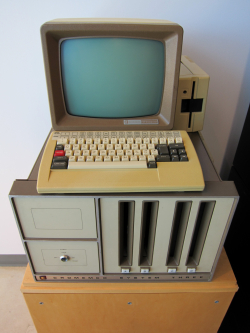 I came up in the 1970s, the era of stagflation.
I came up in the 1970s, the era of stagflation.
I was fortunate to be spared the worst of it. I lived most of the decade around Rice University. While everyone else in America was suffering, Houston enjoyed a boom. I didn’t drive regularly until I got a job that paid for it, in 1978. Even then I was young enough to bike everywhere. Houston is flat and youth can dodge cars.
Despite my penny-pinching, and that of my dear wife, the house we eventually found was less affordable than houses are today. This was because money cost money, a lot of money. We paid 12% interest, adjustable every 6 months. We half-expected to be paying 15% in three years.
By the 1980s inflationary expectations were built-in to the economy. Everything was expected to cost more because raw materials, starting with oil, were so dear. Stagflation meant a stagnant economy wracked by inflation.
 The end of COVID lockdowns, and the Ukraine war, have many fools convinced those days are back. They’re not, because of something I saw in 1979. A neighbor paid $20,000 for a Cromemco CP/M based computer, and $5,000 each for terminals, which she had installed in the homes of friends. The four used them to transcribe court records, creating perfect legal documents at a fraction of the normal cost. My neighbor had no debt, but soon had a growing, profitable business in her home.
The end of COVID lockdowns, and the Ukraine war, have many fools convinced those days are back. They’re not, because of something I saw in 1979. A neighbor paid $20,000 for a Cromemco CP/M based computer, and $5,000 each for terminals, which she had installed in the homes of friends. The four used them to transcribe court records, creating perfect legal documents at a fraction of the normal cost. My neighbor had no debt, but soon had a growing, profitable business in her home.
This was the dawn of a new age, what I have since called the age of Moore’s Law. As chips get faster, they infect everything they touch. Storage gets cheaper, networks more efficient, and productivity jumps at an increasing rate. This process continues today.
There have been many efforts to fight this deflation over the years. In the 1990s Microsoft introduced bloatware, operating system code that required businesses to constantly replace their machines. In the 2000s we had the first housing bubble, forcing the government to take over the banking system. In the last decade we had Bitcoin, SPACs, and a second real estate bubble.
All these things kept deflation from really biting, even while it impacted every facet of life. Today’s cars and electronics are hugely efficient compared to what we had even 10 years ago. Merchants can now break bulk and deliver goods to you for less than it once cost you to visit their stores. Money is an app, and even scientific productivity continues to skyrocket.

These experts are wrong. Lumber prices are already declining. Gas prices will moderate. Ocean freight rates are heading down. Competition for today’s higher prices is creating new supplies and encouraging efficiency. Use Moore’s Law to cut costs and you earn more money. Get rid of loan officers, retail drudges, and gatekeepers of all sorts, as we’ve already eliminated gasoline attendants, travel agents, and ad salesmen. Yet with all this creative destruction unemployment is down, to 3.6% by last count.
Moore’s Law is winning again. It will continue to win. The only question will be what to do with all the wealth. So far, we’ve been wasting it. What if we invested it instead, in the social goods that lead to better lives for everyone, and even lower costs?









